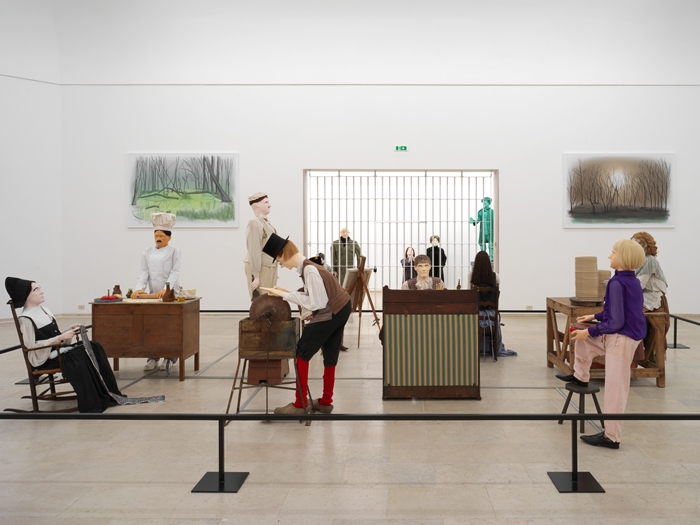ArtReview sent a questionnaire to artists exhibiting in the various national pavilions of the 2019 Venice Biennale, the responses to which will be published daily in the lead-up to the Venice Biennale opening on 11 May.
Jos de Gruyter and Harald Thys are representing Belgium. The pavilion is in the Giardini.
What can you tell us about your exhibition plans for Venice?
The project depicts a society that is folded in on itself where tradition is erected as a refuge. Under the title MONDO CANE, it presents itself as a local folkloric museum that displays the human figure. The exhibition contains some twenty dolls, most of them automated; a series of large illustrations depicting pastoral scenes; and steel bars that fence off the pavilion’s lateral recesses. At the centre of the building there are artisans – such as a cobbler, a stonemason and a spinner who, true to themselves, ply their respective trades. The side rooms of the pavilion are a parallel world peopled by louts, zombies, poets, psychotics, the insane, and the marginalised. These two worlds exist in the same space, but they seem to be entirely unaware of one another. The gestures of the dolls are mechanical and awkward. The sounds and movements alternate and are activated by the visitors’ presence via a motion detector at the entrance. The space is imbued with songs, plaintive cries and labour. It will offer a real promenade, akin to a touristic or anthropological experience, reminiscent of an old Europe.
What does it mean to ‘represent’ your country? Do you find it an honour or is it problematic?
It is an honour to represent a country that’s regarded as problematic by almost half of its inhabitants. I find it a very romantic idea that fits perfectly with the concept we developed.
The old school concept of the Biennale with its national pavilions in which art becomes a source of national pride is for me personally very funny. It is totally in contradiction with what the world looks like today but offers a perfect setting for our project. The whole thing reminds me a bit of Downtown Abbey.
How does having a pavilion in Venice make a difference to the art scene in your home country?
I don’t think having a pavilion makes a difference to the art scene itself. Being represented at the Biennale in a good way does make a difference. It is a huge public event for contemporary art that operates on global scale. Countries can create a good climate for their artists by representing them well in this event.
If you’ve been to the Biennale before, what’s your earliest or best memory from Venice?
I only like to walk in Venice at night when it’s quiet and fantasise about the movie Don’t Look Now [1973] by Nicolas Roeg. Walking at daytime around San Marco feels like being a priest in The Exorcist [1973].
You’ll no doubt be very busy, but what else are you looking forward to seeing?
I am very curious about the Pavilion of Venezuela. It is very quiet and the walls look wet and full of mushrooms. From what I can understand, art is not a priority there at the moment. I also like the Russian Pavilion next to it. It looks as if it was renovated by a very square Flemish architect from the nineties.
The Venice Biennale runs 11 May – 24 November 2019
